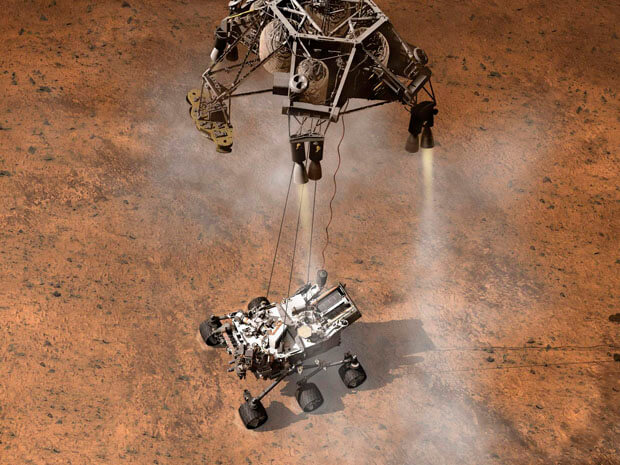The methane mystery Methane on Mars is really interesting – and really hard to explain.
On Earth, methane signals microbes: they produce it, lots, as they break down organic matter. Although there are other, non-living sources of methane, such as some geological processes, it is generally considered a useful biomarker: i.e. if you find methane, you may have found life. No wonder scientists are all excited to find lots of it.
At least, lots according to the Mars Curiosity Rover. But very little according to the ExoMars Trace Gas Orbiter (TGO) – which is where most of the mystery comes in.

The European Space Agency set the TGO up in 2016 to confirm the Curiosity Rover findings. They were excited. Methane was big news. But it completely failed to give the large methane readings they were looking forward to.
And so they began to suspect that the rover was a bit glitchy. How had it measured such high concentrations of methane on Mars when another instrument couldn’t pick up the same values? And not just once either: over and over and over again. Some sceptics suggested that the detected methane might be coming from the Curiosity Rover itself, that it was, in fact, roaming Mars and burping out small clouds of methane that it was then measuring and sending back data considering. But then scientists had a new idea.
What if both measurements are valid?
It sounds crazy, but maybe it isn’t. Afterall, the two measurements were not only taken with different instruments, but were separated geographically and temporally. The TGO, a daytime instrument, measures methane at ~5 km up in the Martian atmosphere, whilst the rover is sitting on the surface, picking up its measurements at night. During a twenty-four hour period, the planetary atmosphere goes through cycles, and mixing occurs.
Scientists have speculated that maybe methane leaches out of the ground, creating the high (410 parts per trillion by volume) concentrations at the surface[1]. But this never reaches any height. Whilst at night when the rover is awake, the methane accumulates, during the day scientists think bigger convection currents stir it up, diluting it with the rest of the atmosphere and leading to low level (< 50 parts per trillion by volume) TGO readings.
If this theory is correct, scientists estimate the leaching rate must be 2.8 kg per Martian day. Which is a pretty cool thing to put a number on.
One confusing question is yet to be answered, however: where is all the methane going? Stable for normally around 300 years, methane isn’t prone to just disappear or float off into space. So it should be accumulating in the upper atmosphere – but isn’t. Whilst they’re scratching their heads, let us know if you have any ideas about this mystery. Research is currently underway to explore possible ways the methane could be getting broken down faster: like dust-driven electric discharges in the atmosphere, or reaction with oxygen at the planet surface.
Needless to say, scientists have to come up with an answer to explain the loss of methane, otherwise the both-measurements-are-valid theory is just all hot air.
Oh, and yes, we still don’t know where it’s coming from either!





























